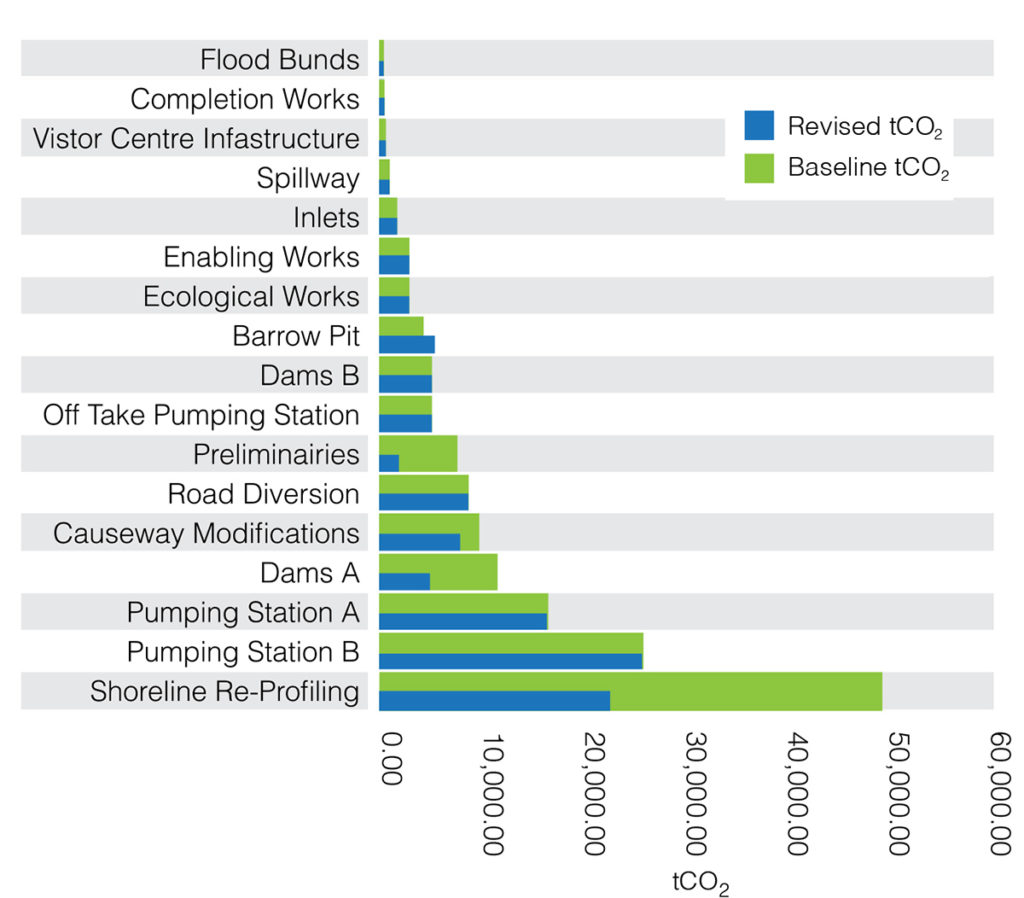
Elvet Consultants have experience in developing, implementing & managing complex embodied carbon measurement tools that enable our clients to consider the overall environmental impact of their asset whilst delivering Value for Money.
Introduction
Carbon accounting is historically focussed on the emissions created by the burning of fossil fuels during a building’s operational life (e.g. heating and cooling).
Embodied carbon quantifies the CO2 produced in relation to the construction of the building. This includes the extraction of raw materials, manufacturing of products, building works and the eventual disposal.
At present the industry has focussed on reducing the operational carbon associated with the occupation of a building by improving the performance of lighting, heating and ventilation; however as building designs are becoming more efficient the need to also consider the whole life carbon footprint is becoming increasingly recognised throughout the industry.
“Elvet were instrumental in developing a bespoke embodied carbon measurement tool to quantify a five-year construction plan circa £1.3bn”
Methodology
Elvet Consultants have identified that embodied carbon has a direct link with capital spend. This has allowed us to clearly identify the key elements which pose the greatest significance within a project. We can use this information to form the basis of a carbon reduction plan and develop targeted change.
Embodied Carbon Process
Cradle to Gate | > Extraction of raw materials > Process of raw materials > Manufacture building products |
Gate to Site | > Transportation of products to supplier > Transportation from supplier to site |
Site to Construction End | > Plant used to assemble building > Labour used to assemble the building > Welfare facilities > Disposal of construction waste |
Constructon End to Grave | > Maintenance of building > Refurbishment of building > Demolition of asset including disposal |
 tCO2 tCO2 | > Total carbon produced during construction project |
Within this strategy we can quantify the effect that different materials and construction methods would have upon the project’s embodied carbon. To enable the client to make an informed decision, we can also include the financial implications attached to each option considering the CAPEX, OPEX and Disposal.
Each building material will have its own unique cyclical maintenance regime including additional operational benefits, i.e. thermal efficiency. These will be considered as part of the overall reduction plan, to ensure the most economical and sustainable option is adopted.
Through using this methodology we have identified significant cost savings, whilst also improving the scheme’s overall carbon footprint.
Benefits
Calculating the embodied carbon and formulating a carbon reduction plan will allow you to fully appreciate the environmental impact of your development, whilst also identifying potential cost-saving solutions to reduce your carbon footprint during the lifetime of the asset.
Quantity surveyors are typically involved in the measurement of materials and labour to provide a financial appraisal of the development; however we can provide the added value of calculating the embodied carbon at the same time, whilst maintaining price competitiveness.
Calculating the embodied carbon allows you to advertise your green credentials to the wider market and promote your commitment to reducing the impact of your business operations upon the environment.
For more information please contact us.
Embodied Carbon Project
Elvet were asked to calculate the embodied carbon associated with our client’s proposal to increase the capacity of an existing reservoir and improve the surrounding infrastructure.
We separated the cost plan into the key phases of the project and identified the breakdown between materials and labour. Our investigation determined that the construction of a new access road and disposal of the existing shoreline protection, contributed a significant proportion of the project’s embodied carbon. We devised a solution to reclaim the shoreline protection and reuse this as a perimeter access rather than laying a new tarmac road. This resulted in a substantial reduction in the project’s embodied carbon and development costs

 Award-winning Chartered Quantity Surveyors and RICS Chartered Building Surveyors. T: +44 (0) 191 7166768
Award-winning Chartered Quantity Surveyors and RICS Chartered Building Surveyors. T: +44 (0) 191 7166768 